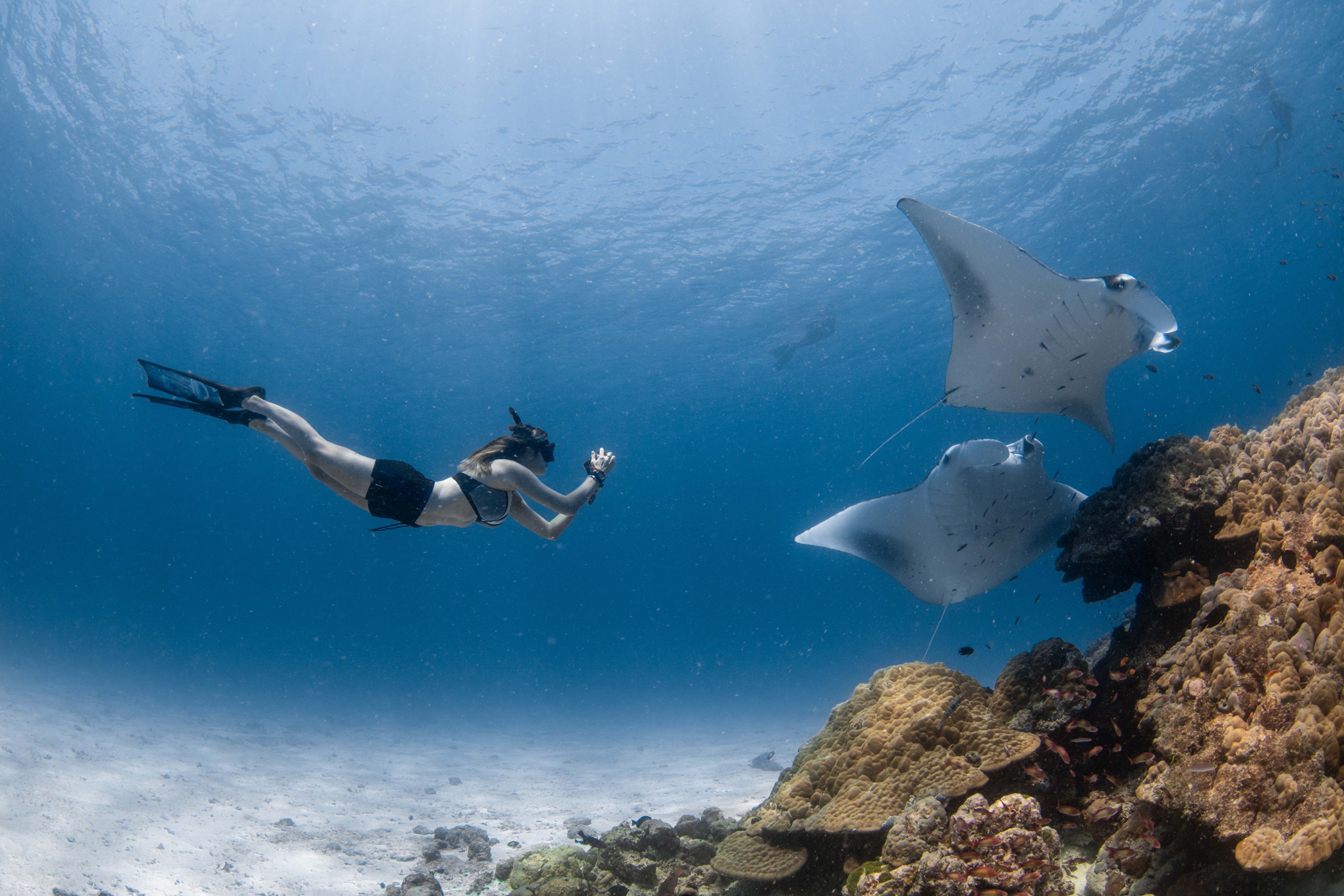It’s my first day at the Four Seasons Resort Maldives at Landaa Giraavaru. After touring the hotel’s solar-powered desalination plant—which turns ocean water into drinking water through machinery that feels like an industrial-sized Aquaguard—I hear the nostalgic ring of an old-school Nokia. As two rings go by, Sabah—the resort’s marketing manager and currently also my buggy driver—gently suggests that it’s my phone ringing. So immersed was I in the recycled-glass crusher and the free-roaming hens that, for a moment, I forgot about the whole reason I was here: the waterproof-cased Nokia I was handed at check-in and told to keep close.
This unassuming phone is, quite literally, my connection to the ocean for the next four days. In a world full of notifications, this is the only one worth diving for, because when it rings, it means one thing: the mantas are here.
Landaa Giraavaru’s privileged position in the Baa Atoll makes it the undisputed winner when it comes to setting the hottest dates with manta rays. Just 15 minutes away lies Baa Atoll’s most prized natural formation—Hanifaru Bay, a keyhole-shaped lagoon and UNESCO Biosphere Reserve that turns into a full-blown marine rave from May to November.
At the resort’s world-class Marine Discovery Centre, I learn from biologists how the elements align perfectly to make Hanifaru Bay the largest known congregation of manta rays on Earth. Each year, monsoonal currents sweep plankton into the bay, trapping it within the narrow reef mouth. For manta rays—gentle filter feeders that can span up to five metres in width—it’s an all-you-can-eat buffet. Dozens, sometimes hundreds, of them swoop in, performing underwater pirouettes as they feed in perfect synchrony—often accompanied by a whale shark (or four).








